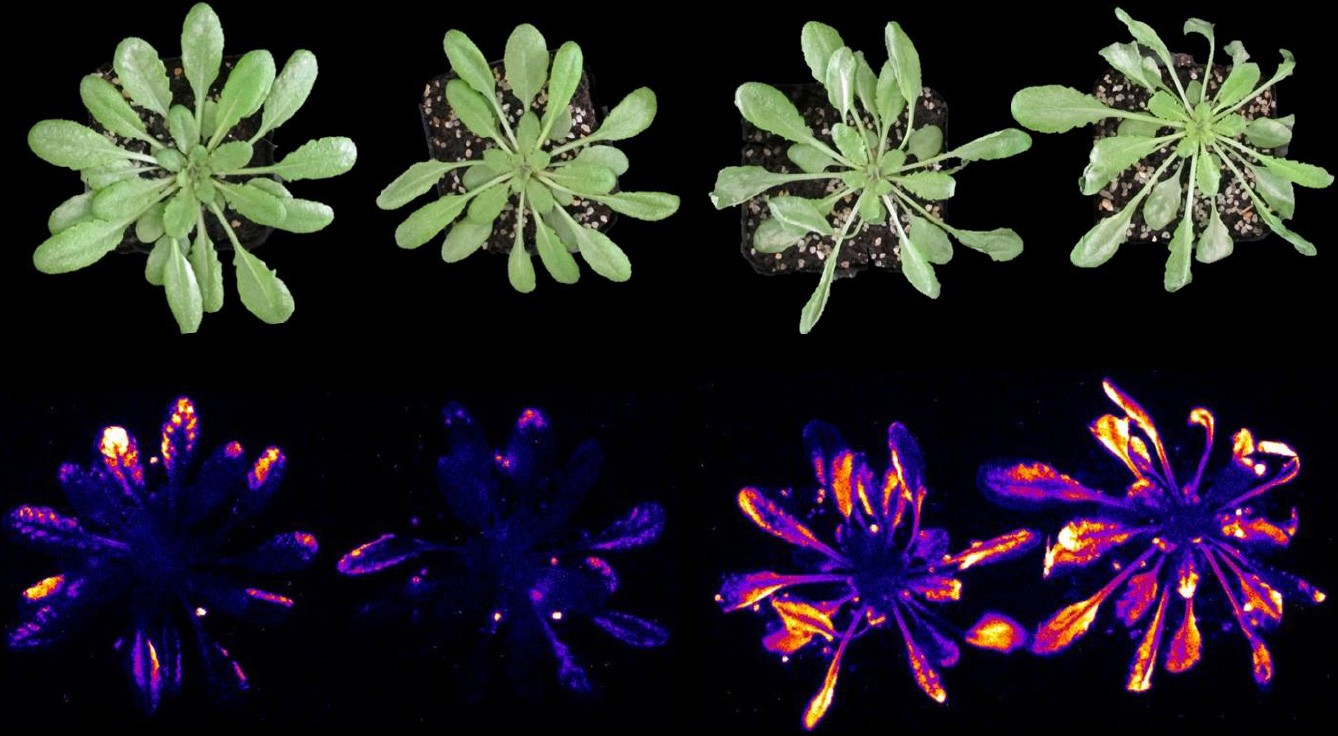博文
Plant Cell:植物解毒反应作用于光氧化胁迫下的耐受性
||
Decoding ß-cyclocitral-mediated retrograde signaling reveals the role of a detoxification response controlled by SCL14 and ANAC102 in plant tolerance to photooxidative stress
First author: Stefano D'Alessandro; Affiliations: CEA Cadarache (法国原子能署卡达拉什分部): Saint Paul, France
Corresponding author: Michel Havaux
When exposed to unfavorable environmental conditions, plants can absorb (忍受) light energy in excess of their photosynthetic capacities (光合能力), with the surplus (过剩的) energy leading to the production of reactive oxygen species (活性氧物质) and photooxidative stress (光氧化胁迫). Subsequent lipid peroxidation (脂质过氧化作用) generates toxic (有毒的) reactive carbonyl species (活性羰基化合物) whose accumulation culminates (达到极点) in cell death. ß-cyclocitral (β-环柠檬醛), an oxidized by-product (副产品) of ß-carotene generated in the chloroplasts, mediates a protective retrograde response (逆行反应) that lowers the levels of toxic peroxides and carbonyls, limiting damage to intracellular (细胞内的) components. In this study, we elucidate the molecular mechanism induced by ß-cyclocitral in Arabidopsis thaliana and show that the xenobiotic (异型生物质) detoxification response (解毒反应) is involved in the tolerance to excess light energy. The involvement of the xenobiotic response suggests a possible origin for this pathway. Furthermore, we establish the hierarchical structure (层次结构) of this pathway that is mediated by the ß-cyclocitral-inducible GRAS protein SCL14 (SCARECROW LIKE 14) and involves ANAC102 as a pivotal (关键的) component upstream of other ANAC transcription factors and of many enzymes of the xenobiotic detoxification response. Finally, the SCL14-dependent protective mechanism is also involved in the low sensitivity of young leaf tissues to high light stress.
当暴露在不适合的环境条件下,植物能够忍受超过其光合能力的光能,而过剩的光能将会产生一些活性氧物质和光氧化胁迫。随后脂质过氧化作用会产生有毒的活性羰基化合物,这些化合物的积累将在细胞死亡时达到极点。β-环柠檬醛是叶绿体中的β-胡萝卜素氧化的副产品,该物质介导植物中保护性的逆行反应,会降低有毒过氧化物和β-环柠檬醛的水平,进而限制对细胞内器官的毒害作用。本文中,作者研究了拟南芥中由β-环柠檬醛诱导的分子机制,并且揭示了植物中异型生物质的解毒反应参与了对过量光能的耐受性。异型生物质反应的参与揭示了该通路可能的起源。此外,作者还建立了该通路的层级结构,即由β-环柠檬醛诱导的GRAS蛋白SCL14介导,并且ANAC102作为其它ANAC转录因子和许多异型生物质解毒反应参与酶的上游关键组分参与其中。最终,SCL14依赖型保护性机制还参与了幼嫩叶片组织对强光胁迫的低敏感性。
doi: https://doi.org/10.1105/tpc.18.00578
Journal: Plant Cell
First Published: 27 September, 2018
(P.S. 原文下载:链接:https://pan.baidu.com/s/1qFiSsqwlF_7JjmGMbedfhQ 密码:dmu6)
https://blog.sciencenet.cn/blog-3158122-1138181.html
上一篇:Nature Genetics:多个作物驯化过程中种子休眠基因的平衡选择
下一篇:PNAS:DNA去甲基化酶ROS1负调控拟南芥种子休眠
全部作者的其他最新博文
- • Plant Physiology:CsMADS3促进柑果中的叶绿素降解和类胡萝卜素合成(华中农业大学)
- • Molecular Plant:LBD11-ROS反馈调节作用于拟南芥的维管形成层增殖和次生生长(浦项科技大学)
- • Science Advances:根结线虫通过调控植物的CLE3-CLV1模块,促进侵染进程(日本熊本大学)
- • Nature Communications:油菜素内酯参与植物营养生长期转变的分子机制解析(浙江农林大学)
- • Current Biology:光合作用产生的蔗糖驱动侧根“生物钟”(德国弗莱堡大学)
- • PNAS:花同源异型基因在叶中被抑制、花中被激活的分子机制(南卡罗来纳大学)

